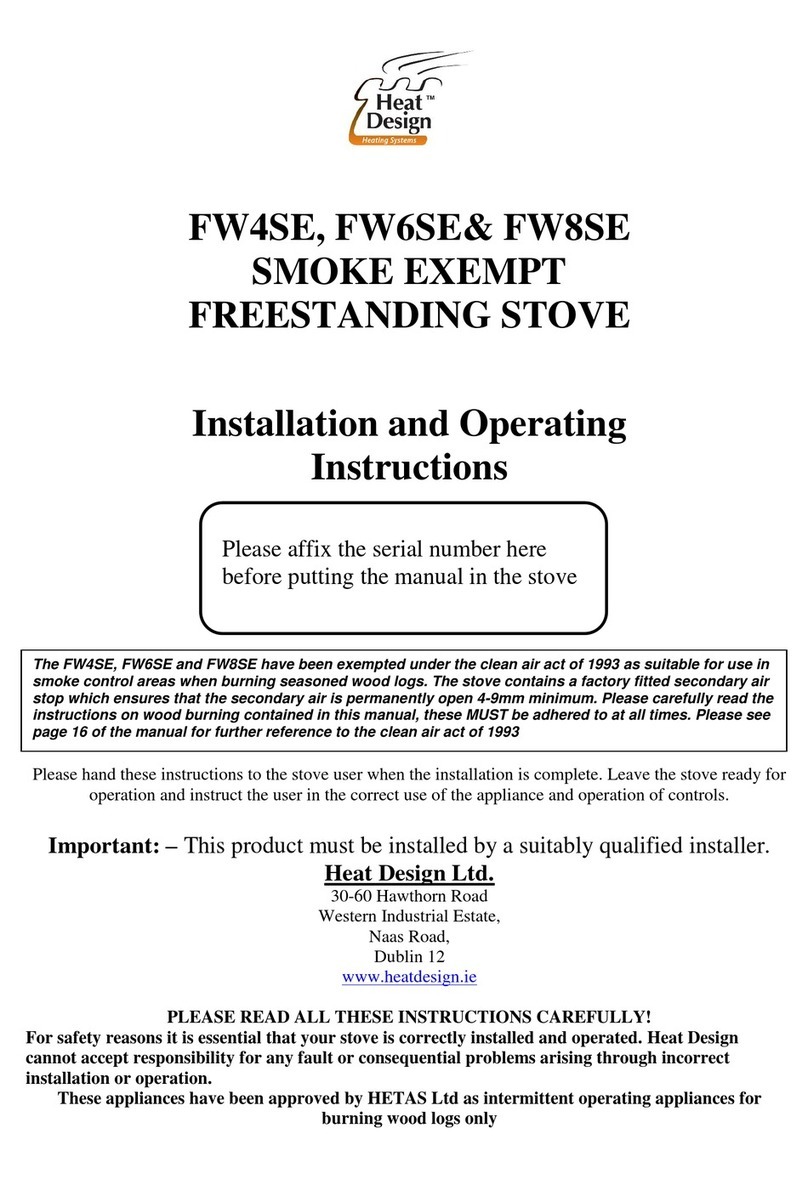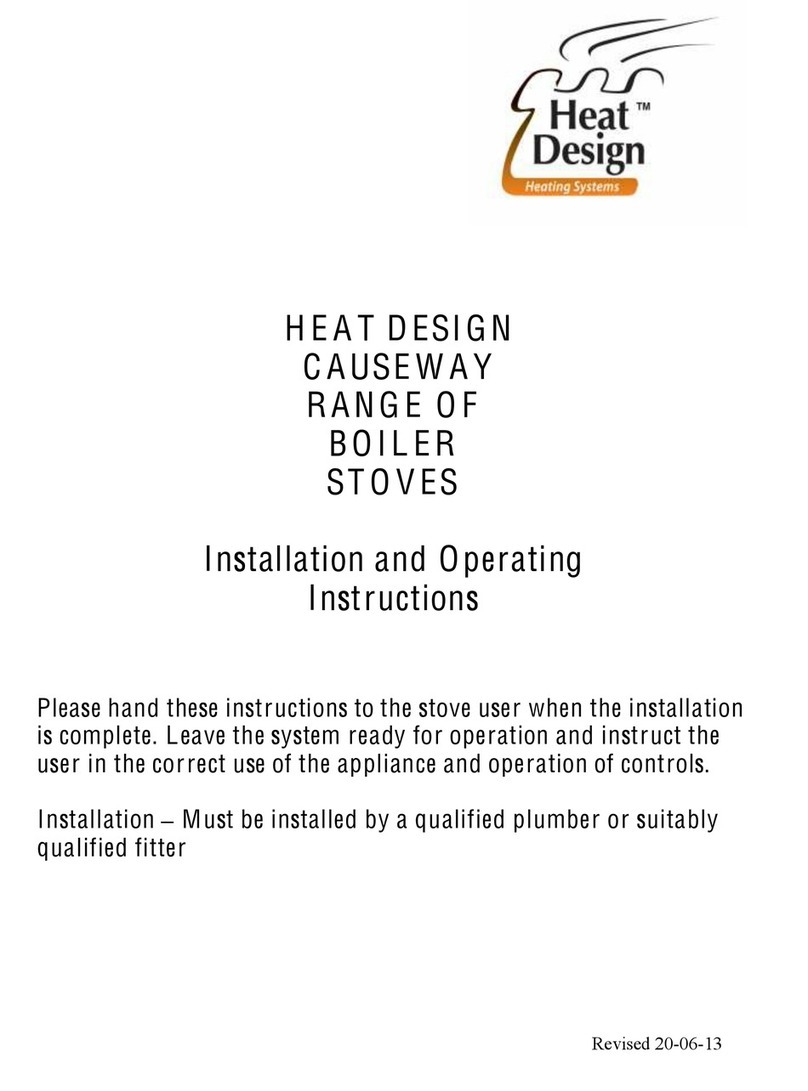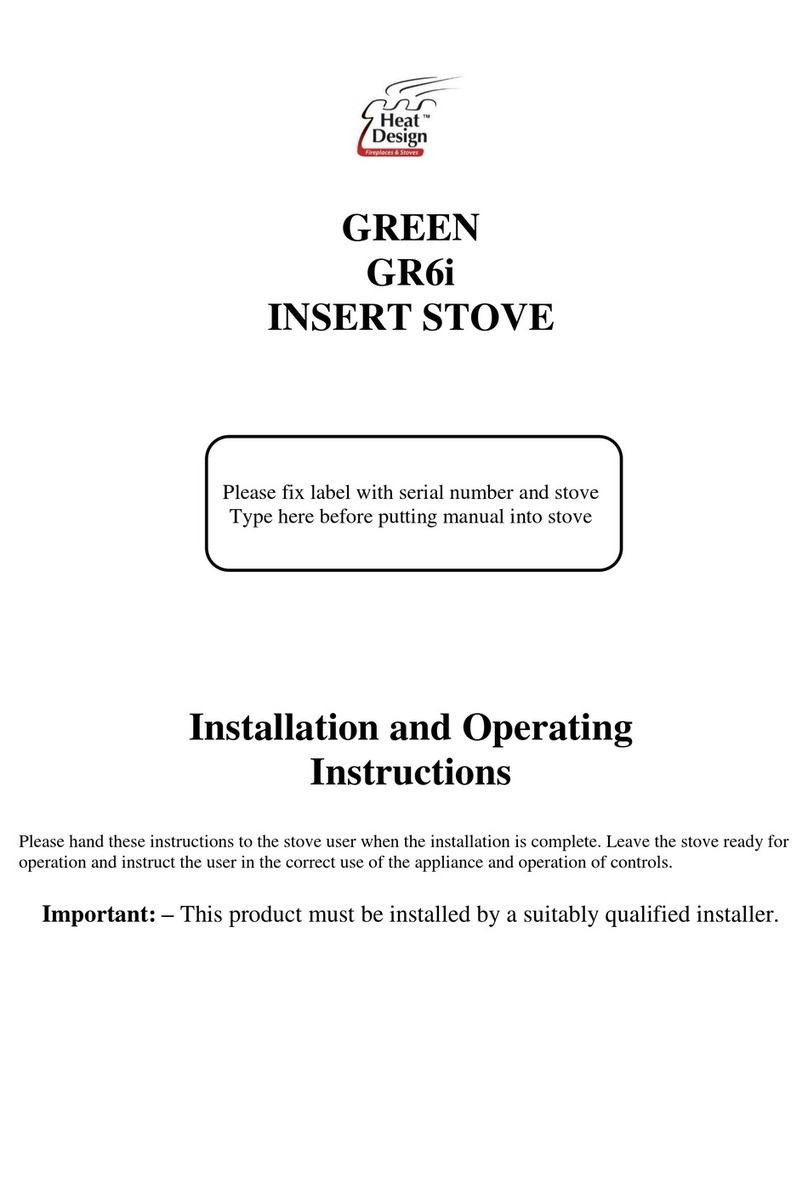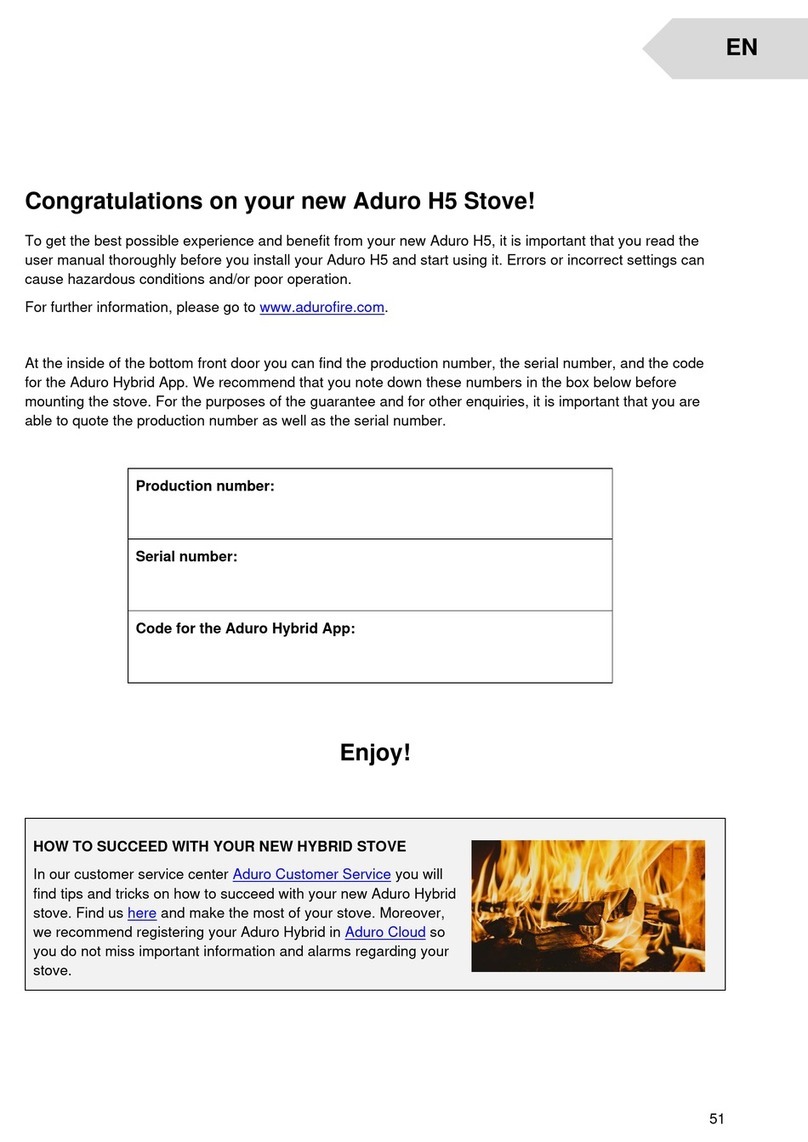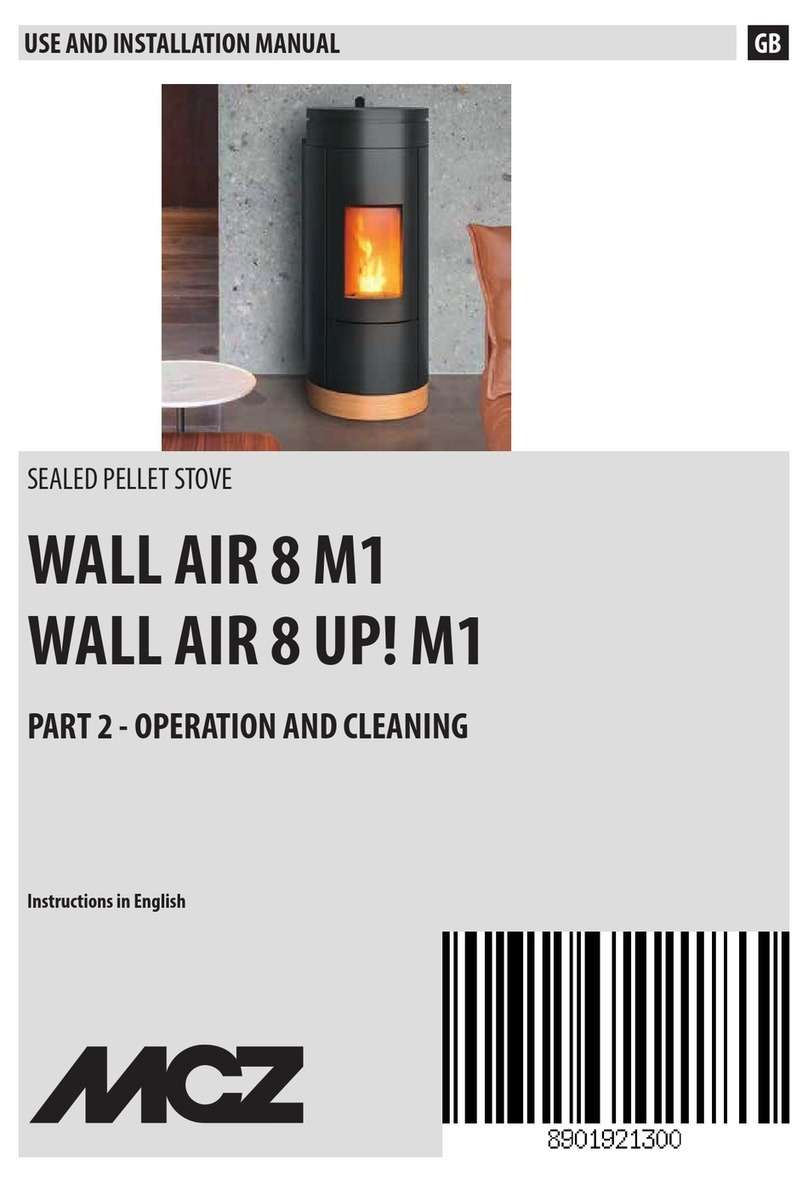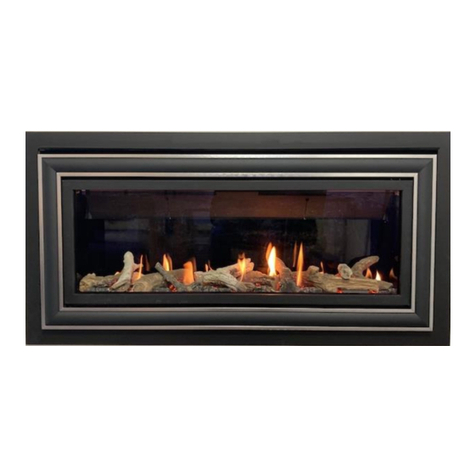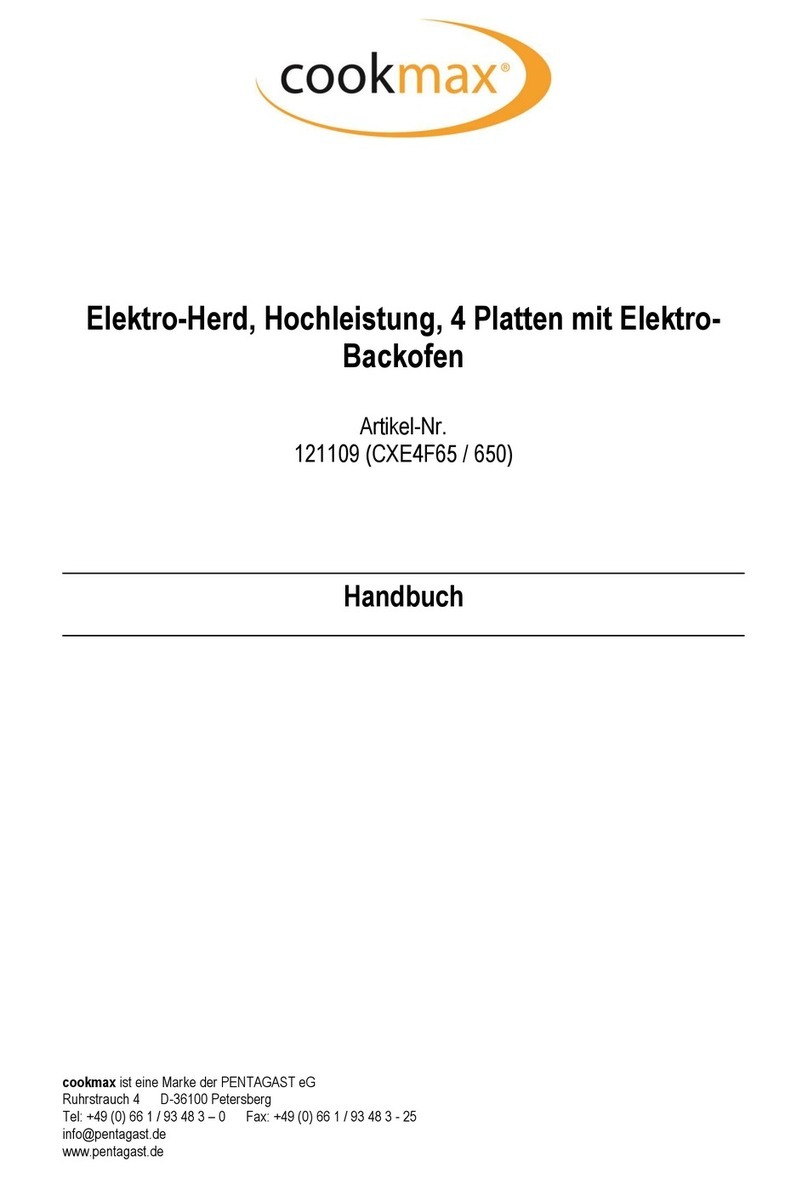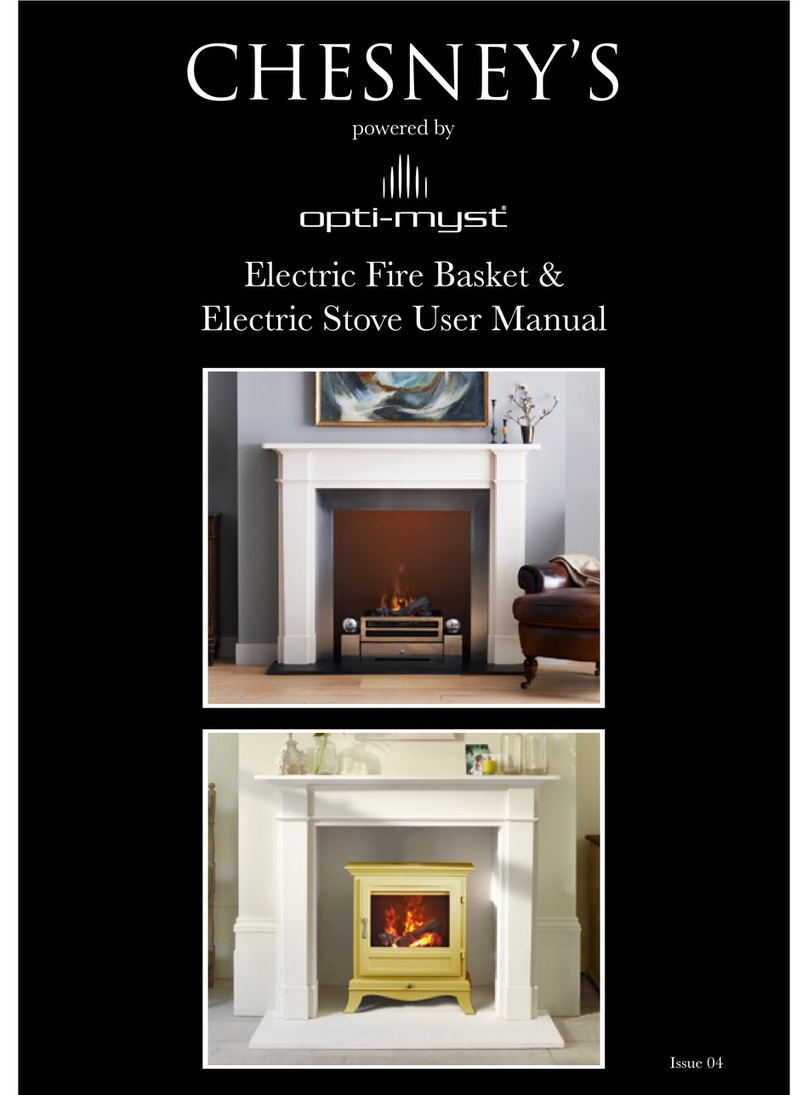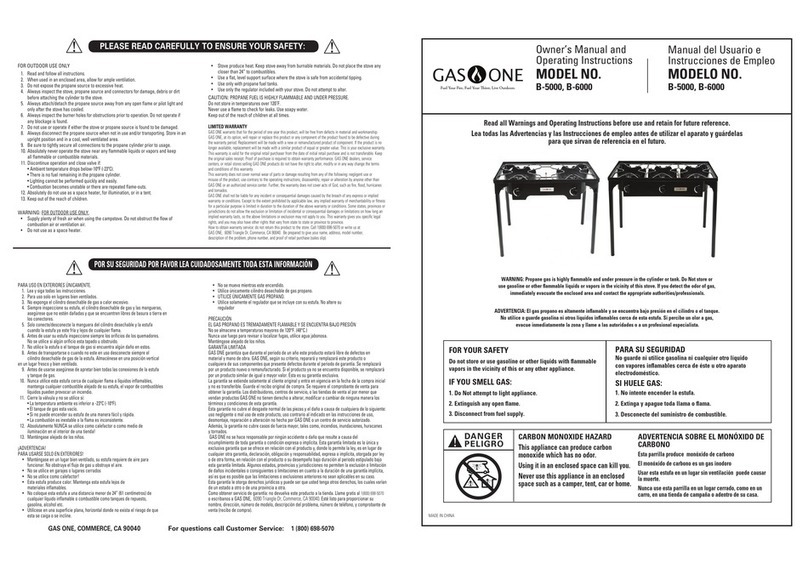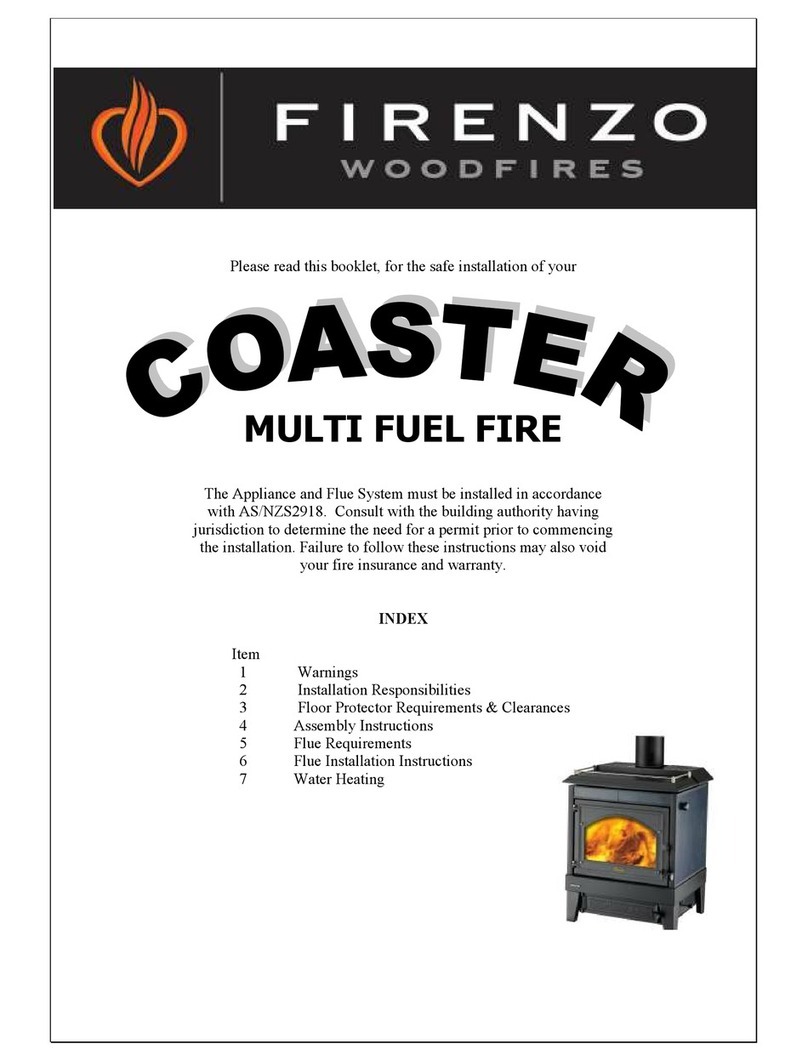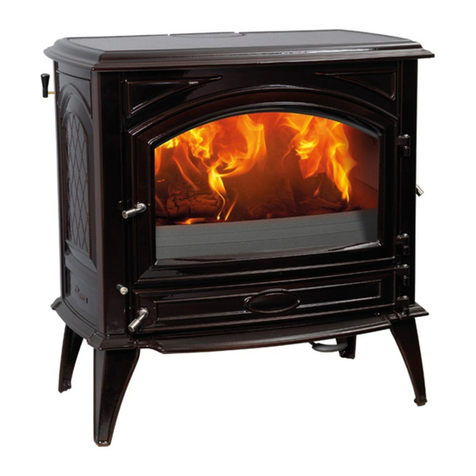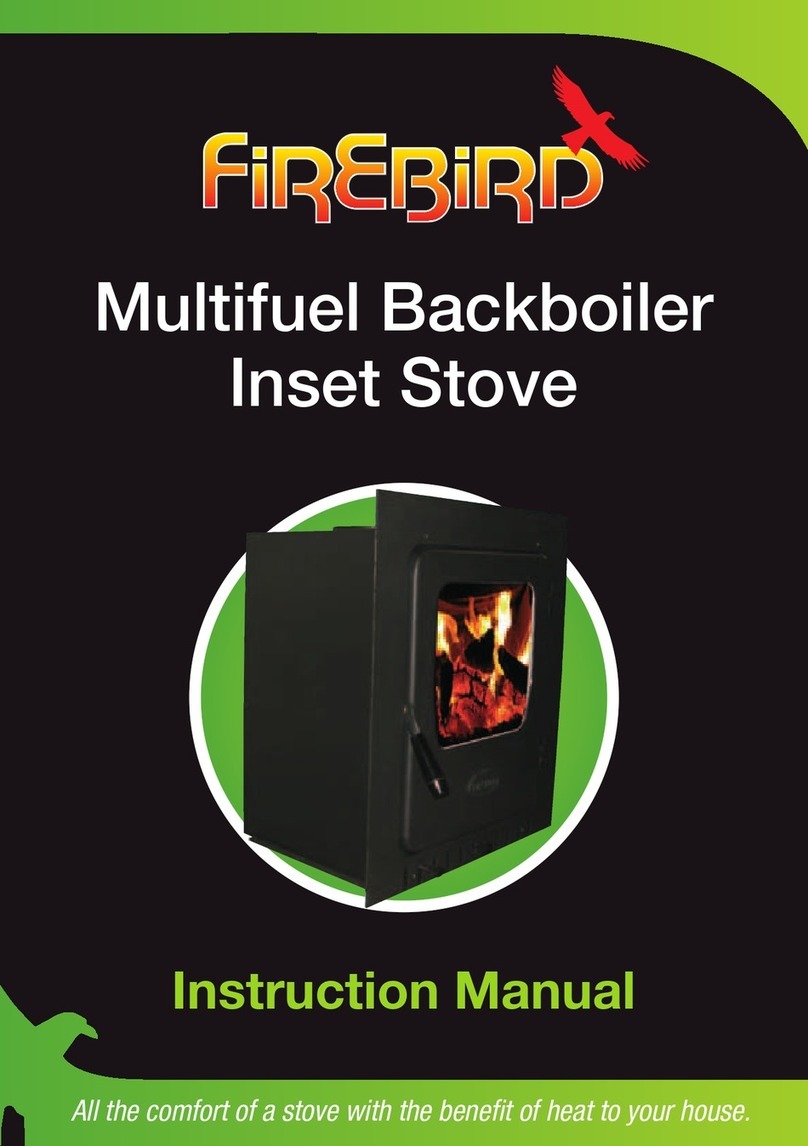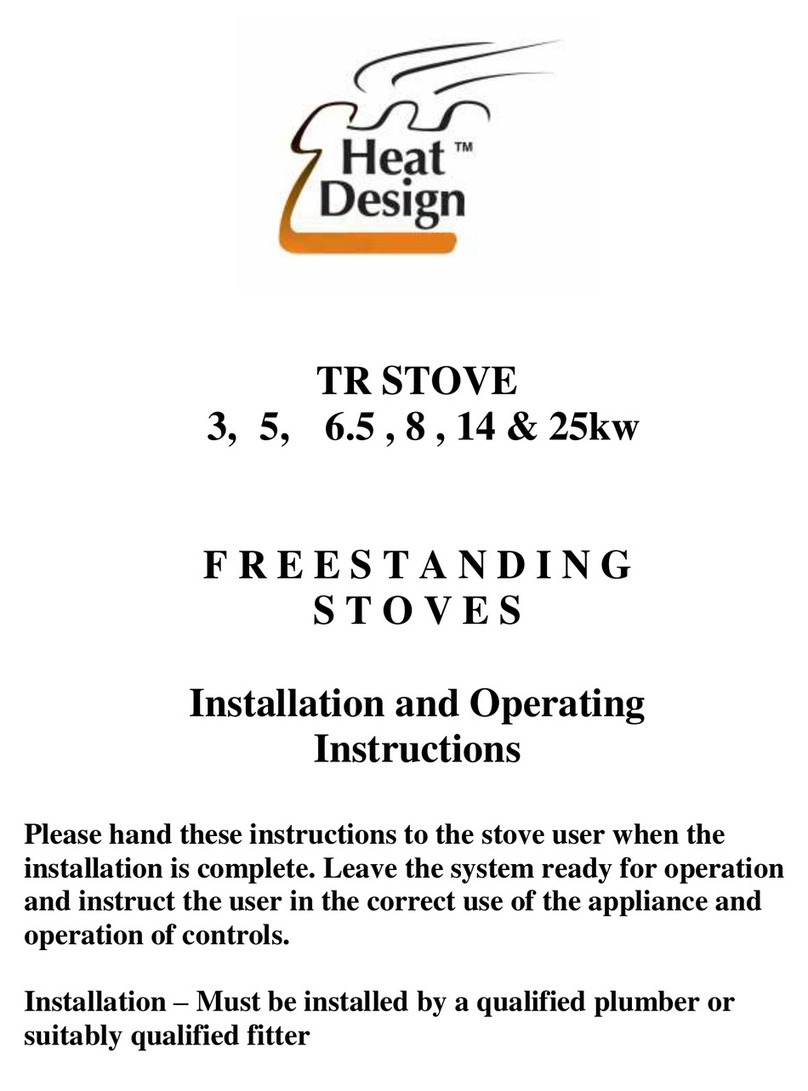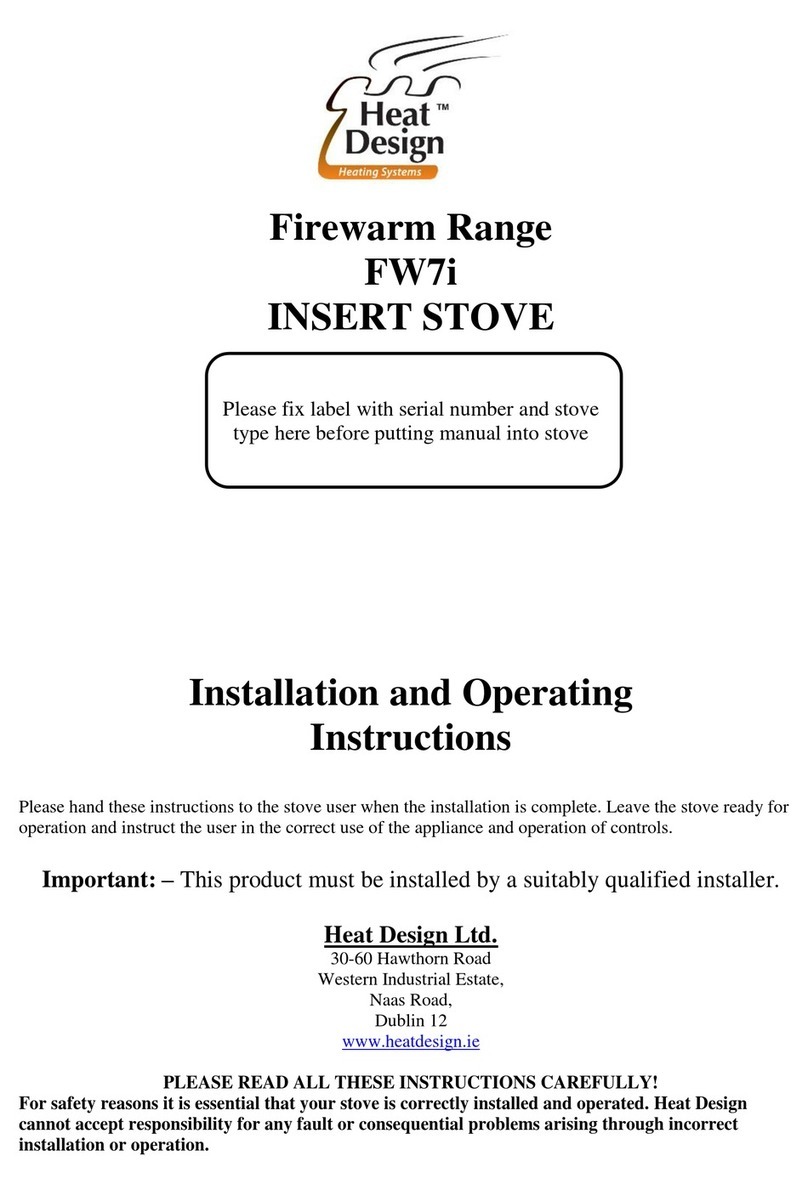8
HD02 01/10/11
See also: section entitled ‘Lighting the Stove’.
Wood burns best on a bed of ash and it is therefore only necessary to remove surplus ash from the stove
occasionally. If the grate is completely clear, place a few handfuls of ash into the slots in the grate to
help the firebed build up.
Burn only dry, well-seasoned wood, which should have been cut, split and stacked - under protection from
rain - for at least 12-24 months with free air movement around the sides of the stack to enable it to dry out.
Burning wet or unseasoned wood will create tar deposits in the stove and chimney and will not produce a
satisfactory heat output. Wood that is not properly dry (‘dry’ is considered to be less than 20% internal
moisture content) uses up energy from the burn process to evaporate the water inside the wood thus
creating very poor conditions for combustion. The main cause of burning problems with wood stoves is
due to excessively damp wood. Wood can appear perfectly dry on the outside but still contain 40-50% water
on the inside. A moisture meter can be purchased from some stove and equipment suppliers if you wish to
check your wood source is correct.
6.5 Lighting the Stove
We recommend that you have two or three small fires before you operate your stove to its maximum heat
output. This is to allow the paint to cure in steadily and to give a long service life of the paint finish. During
this curing in process you may notice an unpleasant smell whilst the finishes finally cure. It is non-toxic, but
for your comfort we would suggest that during this period you leave all doors and windows open.
First, open the primary and secondary air wash control fully. Load the firebox with plenty of starting fuel,
i.e. paper, dry sticks and/or firelighters. Light the fire at the base leaving the primary and secondary air
control fully open. Leave the door slightly ajar for 10 minutes to enhance initial starting and reduce smoke
emission – DO NOT leave the stove unattended if the door is left ajar. Allow the fuel to reach a steady glow
and build the fire up gradually by adding a few small sticks or well split logs at a time. Once you have a
good fire bed established across the grate, further fuel can be added step by step as required. Don’t be
tempted to overload the fire bed with fuel all at once or close down the air controls too much until the fire is
really well established for some time. Once the ignition period is well under way close the primary air and
gradually reduce the secondary air wash control opening to establish the burning intensity you require.
6.6 Re-fuelling
When burning wood, the fire will die down as the fuel is consumed. When the flames disappear and the
remainder is breaking down into glowing embers it is an appropriate time to consider re-fuelling. NOTE: If
the flames disappear and there are still lumps of solid wood left this indicates excessive moisture in the
wood or insufficient air supply/flue draught.
Note: To eliminate unwanted smoke emission, after loading new logs on to the fire, open the air wash
control up fully for -5 minutes to boost the fire and get flames issuing from the top of the fuel as soon as
possible. When flames are well established, reduce the air wash to the running setting required. Burning
without flames above the fuel will create unnecessary smoke. Do not load fuel above the tertiary air inlet
holes at the back of the firebox.
Loading to 4 medium sized logs will produce a good output with reasonable burn time, generally small
logs will burn up quicker producing a high output for a short time and a large log will take longer to burn
and produce less output over a given time. These appliances are approved for intermittent operation on wood
(0.75 to 1.5 hour burn cycles) although much longer burn times can be achieved by fully loading the firebox,
getting the fuel burning well and then shutting the air controls down. The fire will then often need reviving
by first de-ashing and then using small pieces of wood and plenty of air to get flames issuing from the wood
again.
















